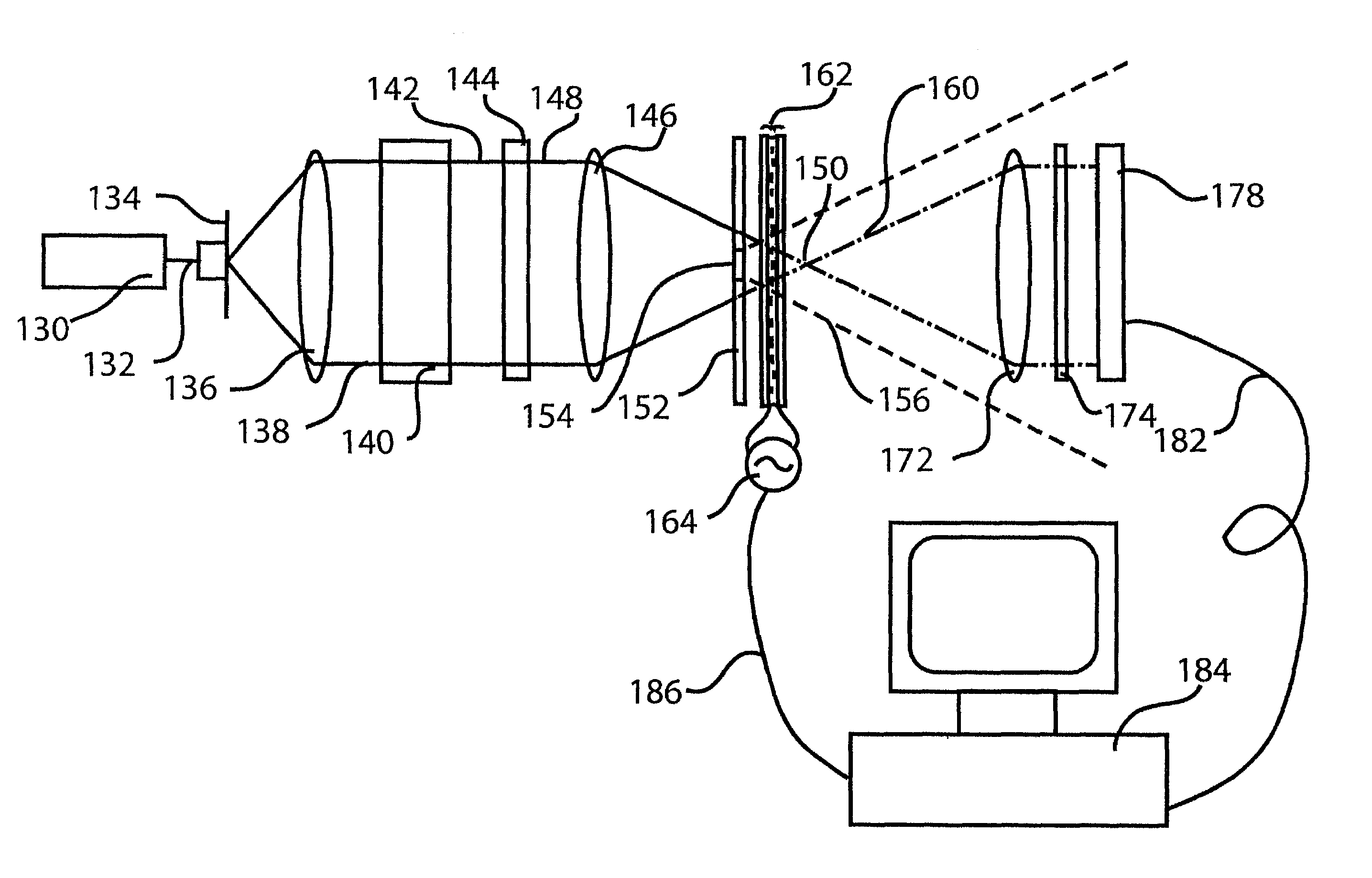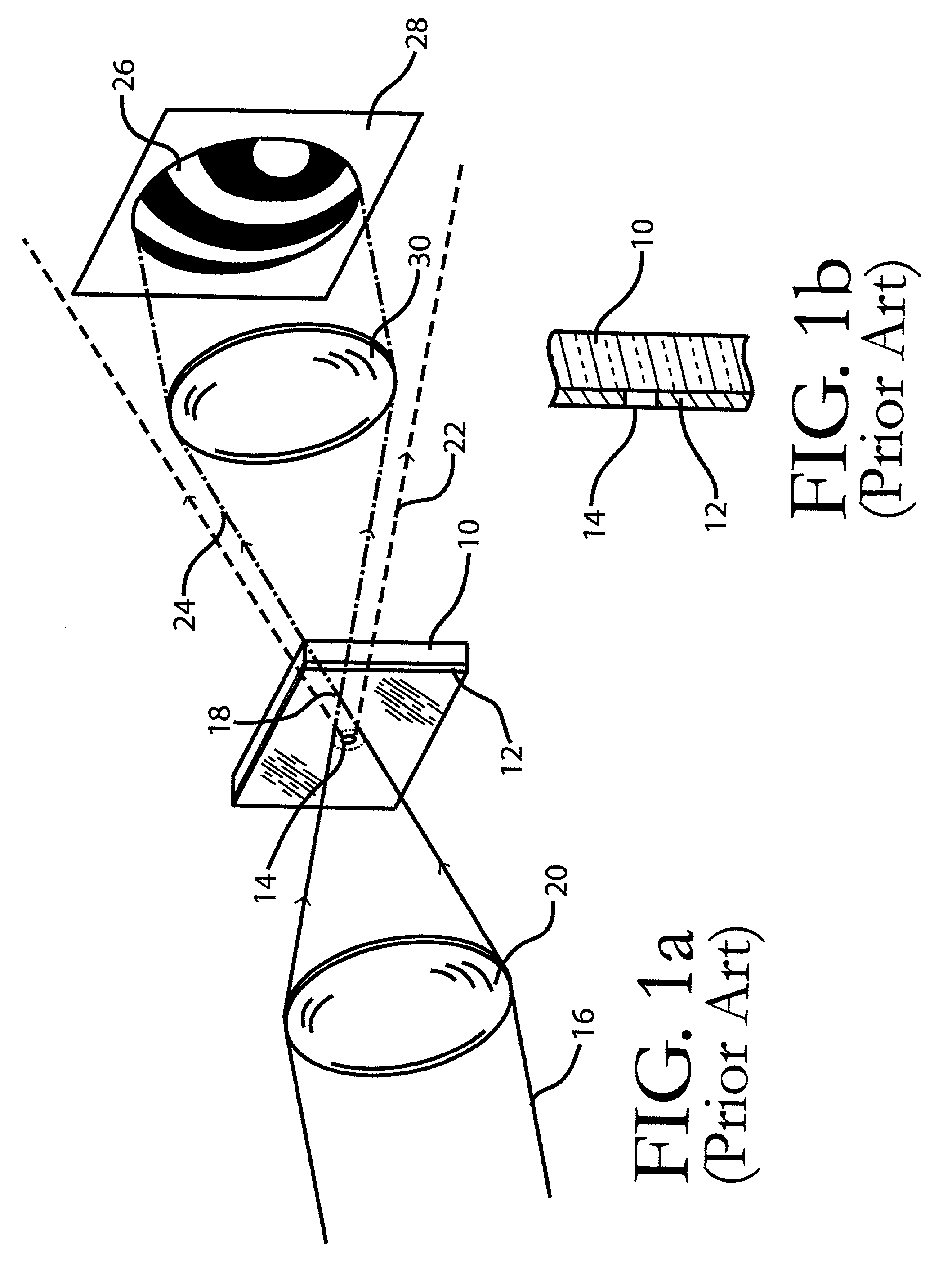Common-path point-diffraction phase-shifting interferometer
a phase-shifting interferometer and common-path technology, applied in the field of interferometry, can solve the problems of environmental instability, difficult alignment of two-beam interferometers, and increased complexity of interferometer systems, and achieve the effect of introducing phase shifts between coincident objects and reference beams, and reducing the difficulty of adjusting the alignment angl
- Summary
- Abstract
- Description
- Claims
- Application Information
AI Technical Summary
Problems solved by technology
Method used
Image
Examples
Embodiment Construction
[0031]The present invention provides an improved common-path, phase-shifting interferometer. A diffractive element, such as a pin-hole, is embedded within a polarization element, which may be a birefringent material, to provide two differently polarized beams from an incident beam, one from the diffractive element and the other from the polarization element that surrounds the diffractive element. Nearly perfectly spherical wavefronts emerge from the diffractive element to provide a reference beam for the later analysis. An object beam that carries very much the same information as the incident beam emerges from the polarization element surrounding the diffractive element. However, the polarization element imparts a change in the polarization state to the incident beam traveling there through. In one embodiment of the invention, this change in polarization state is 90° so that the two beams are polarized perpendicularly with respect to each other. However, other angular relationships...
PUM
 Login to View More
Login to View More Abstract
Description
Claims
Application Information
 Login to View More
Login to View More - R&D
- Intellectual Property
- Life Sciences
- Materials
- Tech Scout
- Unparalleled Data Quality
- Higher Quality Content
- 60% Fewer Hallucinations
Browse by: Latest US Patents, China's latest patents, Technical Efficacy Thesaurus, Application Domain, Technology Topic, Popular Technical Reports.
© 2025 PatSnap. All rights reserved.Legal|Privacy policy|Modern Slavery Act Transparency Statement|Sitemap|About US| Contact US: help@patsnap.com



